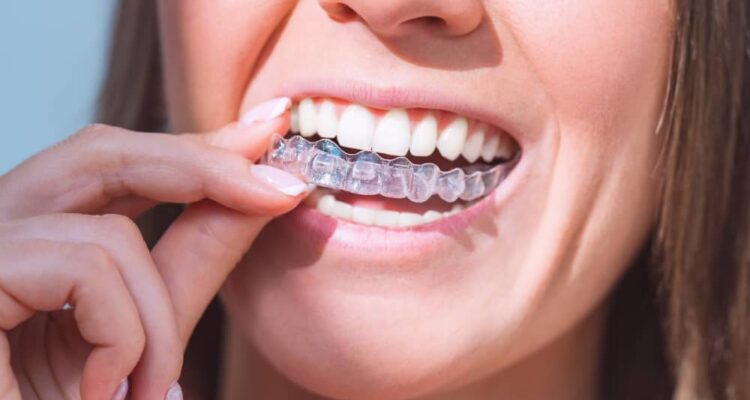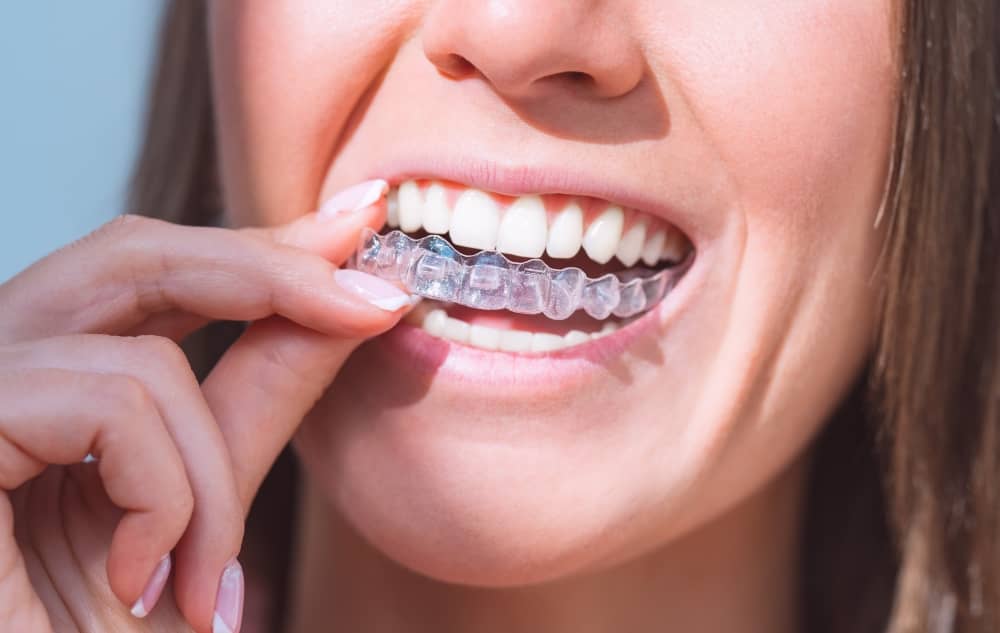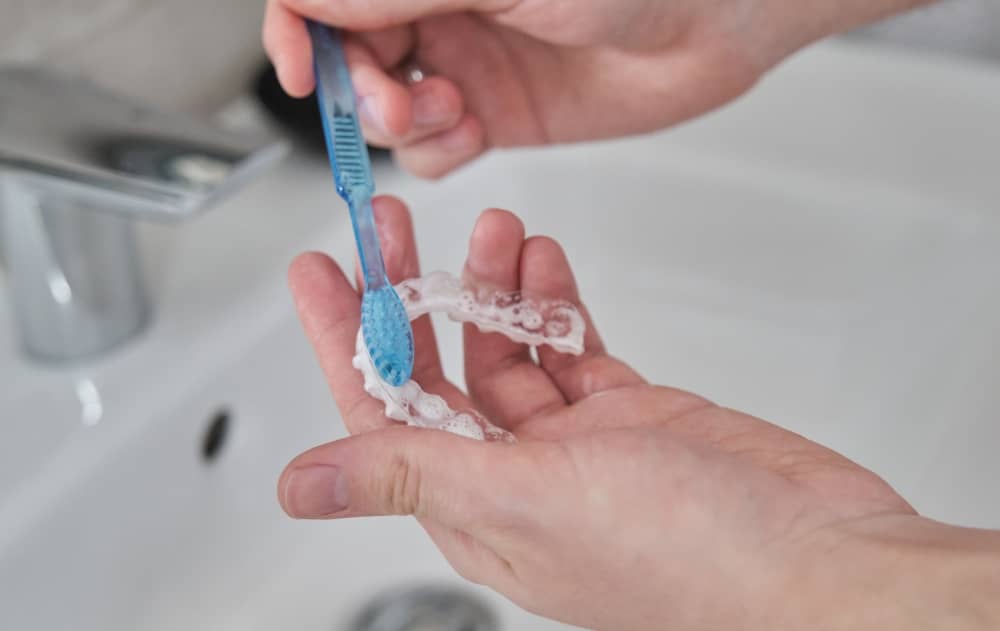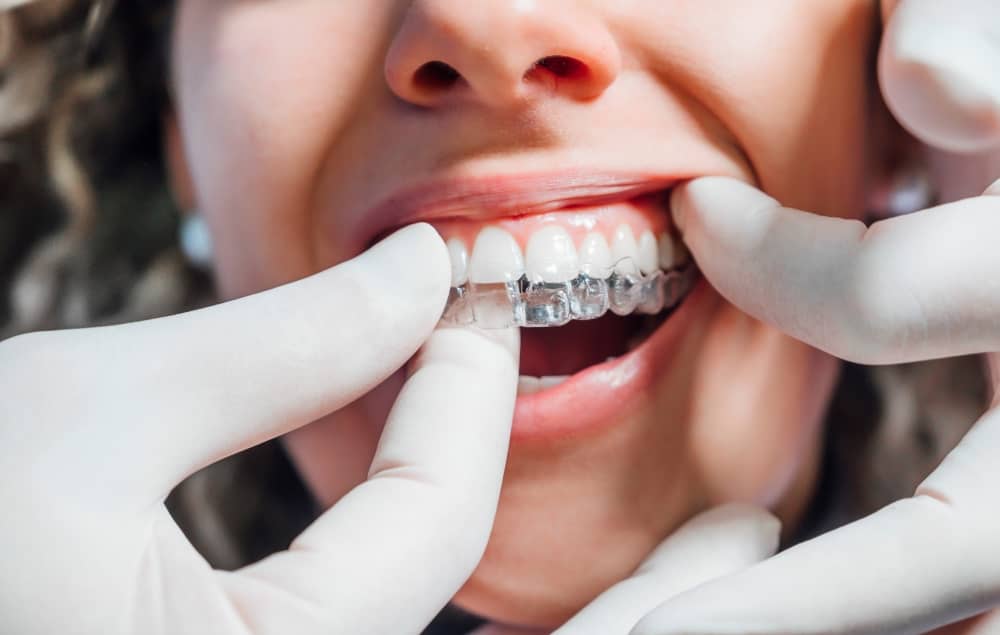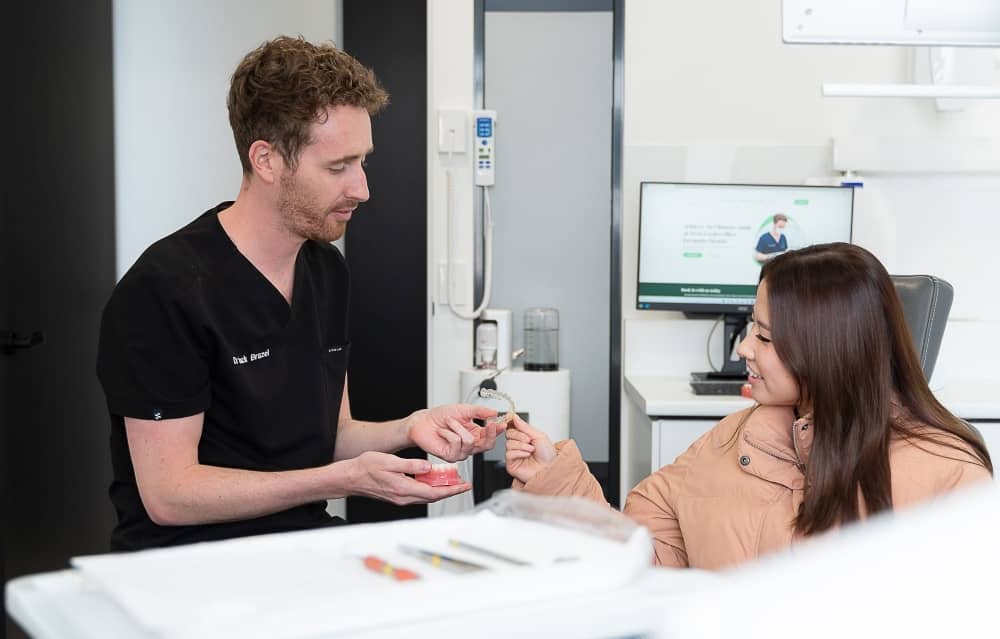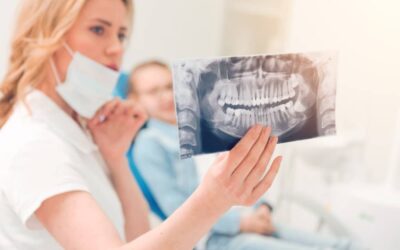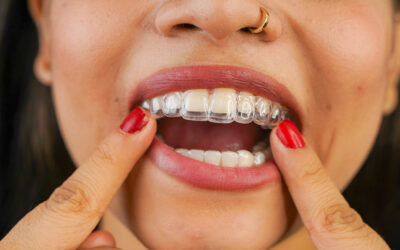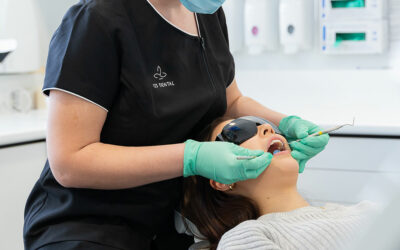If you are about getting Invisalign or have already started your treatment, you’re probably well aware of the many benefits. From the convenience of straightening teeth at home to the discrete clear aligners, Invisalign is an increasingly popular cosmetic dental treatment.
Butusing your aligners properly and practising proper aftercare is vital to getting and keeping results. We’ll cover everything you need to know about Invisalign treatment and aftercare so you can get the best results possible.
A Complete Guide to Invisalign Aftercare
When it comes to orthodontic treatment such as Invisalign, aftercare is just as important as the treatment itself.
Invisalign aftercare starts once you get given your first set of aligners.
Throughout treatment and beyond, it is important to care for your aligners properly and maintain good oral hygiene.
If you fail to clean your aligners properly or do not wear them for the recommended amount of time, you risk side effects such as prolonged treatment time, poor results, decay, and gum disease.
Important Steps for caring for your Invisalign Aligners
Here are important steps for helping your Invisalign treatment and aftercare go smoothly.
Along with ensuring the best results, these tips will protect your aligners and maintain good oral hygiene.
- See your dentist regularly for any scheduled checkups. This allows your dentist to monitor treatment progress and adjust the plan if necessary. Your dentist will also ensure your teeth and gums remain healthy throughout treatment.
- Maintain a good oral hygiene routine by brushing and flossing every day.
- Keep the trays clean by brushing them every day and soaking them at least once a week. This kills bacteria on the trays, prevents discolouration, and helps preserve their effectiveness. We recommend Invisalign Cleaning Crystals (or Polident Denture Cleansing Tablets are a cheaper option)
- Eat a healthy, balanced diet featuring a wide range of whole foods, fruits, vegetables, and high-quality protein. Try to limit sticky, chewy, or sugary foods.
- Wear the Invisalign trays or retainers for the recommended amount of time (22hrs a day). If you do not wear the trays for the recommended time each day, you risk poor results.
What to Avoid When You Have Invisalign?
When it comes to caring for your Invisalign trays and ensuring long-lasting results, it is important to avoid certain things, such as:
- Eating or drinking while wearing the aligners (this can damage or discolour the trays)
- Not wearing the Invisalign trays for the recommended treatment time each day
- Using tobacco products, smoking or vaping (along with harming your health, smoke and tobacco can damage or stain the trays)
- Skipping dental checkups
- Not wearing your retainers once treatment is completed
How to Clean Your Invisalign Trays Properly
It is essential to clean your aligners properly to prevent discolouration and oral health issues.
Here are steps on how to clean your Invisalign trays correctly:
- Rinse the Invisalign trays with warm water to help clear away debris or food particles
- Use a soft-bristled toothbrush to gently brush the trays (use a non-abrasive toothpaste as recommended by your dentist or a liquid, clear antibacterial soap)
- Rinse the trays with warm water
- Soak the trays for up to 15 minutes in an equal mix of white vinegar and warm water. Or use cleaning crystals/ tablets
- Rinse the trays again with warm water
- Allow the aligners to dry and store them in a clean, protected, dry place when you aren’t wearing them
- Do not use hot water on your aligners as it can warp the material and render the trays ineffective
How to Store Your Invisalign Trays Properly
Invisalign trays must be stored in a case to protect them against contamination and damage. If aligners are left on the counter, they can easily be knocked onto the floor, damaged or taken by inquisitive pets!
Damaged trays may not work as well to straighten your teeth and may need to be replaced.
Once treatment is complete, it is just as important to store your retainers carefully. When they aren’t in your mouth, store your retainers in their designated case.
What If I Damage or Lose My Invisalign Trays?
It is important to act immediately if you damage or lose your Invisalign trays. The sooner you get your trays fixed, the less likely you are to negatively affect your treatment.
If you damage or lose your Invisalign trays, be sure to:
- Contact your dentist right away to see what they advise. Your dentist will likely adjust your plan and order a replacement tray immediately.
- Ask your dentist for a temporary tray to use as you wait for a replacement tray. This can help minimise shifting and keep your treatment on track.
- Be extra careful with any additional aligners you have.
- Wear the previous set of trays until you can see your dentist.
The Importance of Wearing Retainers After the Treatment
Invisalign treatment generally takes between 6 to 18 months. After a year or more of treatment, you probably don’t want to lose your results.
If you skip wearing your retainer, your teeth can begin shifting back to their old positions. If teeth shift significantly, you will have to restart treatment to regain your results.
Along with maximising the lifespan of your Invisalign results, wearing your retainer will help maintain bite stability.
Your dentist will decide on the ideal retainer to help maintain your new, straight smile. It is important to follow your dentist’s advice closely regarding wearing your retainer.
In general, you’ll want to:
- Wear the retainer for the recommended amount of time, generally 16hrs a day for the first 3 months, then every night whilst sleeping after that
- Store your retainer in a designated case when it isn’t in your mouth
- Brush your retainer gently every day with a mild toothpaste
- Soak your retainer once a week (you can use a specific denture-cleaning solution)
- Bring your retainer along to any dental checkups
Risks of Poor Invisalign Aftercare
Along with the obvious risks of extended treatment time or lack of results, there are additional side effects of poor Invisalign Aftercare.
Failing to clean your aligners properly or wear them often enough can result in:
- Discoloured Aligners — Clear aligners can become stained and discoloured if you do not clean them properly. This can make the aligners more visible when you are wearing them, thereby reducing one of their biggest benefits.
- Increased Gum Disease and Cavity Risk — If you do not clean your teeth or aligners effectively, you are at an increased risk of gum disease and cavities. Bacteria feed on plaque buildup and create damaging acids that weaken tooth enamel. Be sure to brush and floss daily and keep your aligners clean.
- Teeth Shifting — If you do not follow aftercare instructions, your teeth can slowly shift back to their original positions. This will require you to complete the orthodontic treatment again.
- Damage to the Aligners — If you store your aligners on the counter instead of in a case or drop or scratch them, you may reduce their ability to work. If the damage is bad enough, you will have to pay for a new set of aligners.
When to Call Your Dentist With Invisalign Concerns
If you experience an emergency with your aligners, contact your dentist immediately.
You can also contact us with any concerns or questions about Invisalign treatment. Whether you are experiencing issues or feel like your teeth aren’t responding, our caring team is always here to help.
We’ll ensure treatment is progressing as it should and make sure your teeth and gums are staying healthy.
FAQs About Invisalign Aftercare and Treatment
Q: Can you use mouthwash with Invisalign braces?
Yes, you can use mouthwash with Invisalign. However, it is important to avoid using mouthwash while wearing your Invisalign trays. Mouthwash contains colourants and chemicals that can stain or harm the trays. Use mouthwash after brushing and flossing and before you put your aligners back in. Ask your dentist for recommendations on what mouthwash you should be using.
Q: What happens if you don’t wear Invisalign for a day?
Skipping just one day of Invisalign treatment can allow your teeth to begin shifting out of alignment. This can negatively affect your treatment and increase the total treatment time. If you consistently fail to wear your retainers for the recommended hours each day or skip entire days, your treatment plan will need to be reevaluated completely. For the best Invisalign results, wear your trays for the recommended 22 hours every day.
Q: What does it mean when my Invisalign begins to feel loose?
After wearing a set of trays, your teeth begin shifting toward the desired alignment. As the teeth shift, the trays may begin to feel looser. This is usually a sign that the treatment is progressing as it should. If you have concerns about the fit of your Invisalign trays, contact your dentist.
Q: Is Invisalign right for me?
To learn more about Invisalign and if you may be a good candidate for Invisalign treatment, read our guide: “Is Invisalign the Right Option for Me” or contact us to book a consultation.
Q: Can I eat food with Invisalign?
One of the best benefits of Invisalign compared to braces is the ability to still enjoy all your favourite foods. As opposed to metal braces that require you to avoid certain foods altogether, Invisalign allows you to continue eating just like before treatment.
As long as you remove your Invisalign trays before eating, you can still consume your favourite foods.
Q: What happens if food gets stuck in my Invisalign trays?
It can be common for food particles to get stuck in the trays. As long as you clean away the food debris right away, this is no cause for worry. If you notice food debris in the trays, gently brush the trays and rinse them thoroughly. If needed, give them a good soak. Be sure to always remove your Invisalign trays before eating.
Q: How long do I need to wear the aligners each day?
It is generally recommended for patients wear their aligners for a minimum of 20 hours per day, preferably closer to 22 hours. Your dentist will advise you on the necessary wear time. Approximately every two weeks, you’ll get a new set of aligners that will continue shifting your teeth toward the desired alignment.
Q: Can you smoke or vape with Invisalign?
Smoking or vaping with Invisalign is not recommended. The nicotine in tobacco can stain the clear aligners, leaving them with an unsightly appearance. Frequently removing the trays to smoke or vape can also prevent your teeth from shifting into alignment as they should. This study found a link between tobacco use and decreased success of orthodontic appliances.
Q: Can you drink beer or wine with Invisalign?
Red wine or beer can stain Invisalign trays. Additionally, the alcohol’s sugar can get trapped under the aligners and lead to decay.
Regardless of alcohol content, wine, spirits, or beer can harm or stain the Invisalign trays. If you do choose to consume alcohol while wearing Invisalign trays, be sure to remove the trays first. However, frequent removal of the trays to consume alcohol can lead to stalled results and increased treatment time. It is recommended to limit or avoid alcohol during Invisalign treatment.
Q: Can you chew gum with Invisalign?
You can chew gum with Invisalign, but only if you remove your trays first. Chewing gum while wearing your Invisalign trays can cause gum to stick to the trays. This can breed bacteria and damage the trays and your oral health.
Q: How do I speak clearly when wearing Invisalign?
Most people adjust quickly to speaking while wearing Invisalign, but you may notice you need a little practice pronouncing certain words or sounds. If you are having speech difficulties while wearing your Invisalign trays or retainers, allow yourself time to adjust. Reading out loud can be a helpful exercise for learning to speak while wearing the aligners.
Q: What can I do if I am having pain or discomfort from Invisalign?
Overall, treatment with Invisalign is fairly comfortable and painless. However, you may experience some discomfort in the first 3 days when adjusting to your new aligners. Ask your dentist for advice regarding over-the-counter medications to relieve pain. It is also helpful to stick to softer foods as you adjust to the new aligners. If there are any parts of the aligner that are rubbing on your cheeks/ gums you can use a nail file to gently buff the area in question.
Setting You Up For Success
Invisalign aftercare is imperative for maintaining your brand-new smile. By practising good oral hygiene, keeping your trays clean, storing your trays properly, consuming a healthy diet, and seeing your dentist for regular general checkups, you can maintain your straighter smile.
Invisalign is an increasingly popular method for straightening and giving you the straight, healthy smile you’ve always wanted. Our caring team at 123 Dental is ready to help you get started on your journey to healthy teeth for a lifetime.
For more information or to book a consultation for Invisalign treatment, contact us to find out if you are a good candidate for Invisalign treatment.


